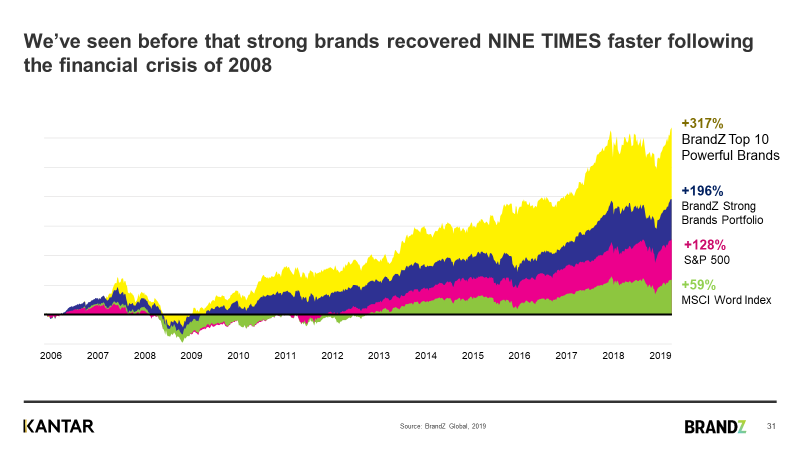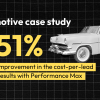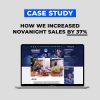
2020 has been an eventful year to say the least. We’ve had to deal with massive bushfires in Australia, a dangerous and deadly escalation between the United States and Iran, Brexit and Trump’s impeachment.
On top of this list of major challenges, the global economy has been crippled by a major pandemic.
Countries across the world deployed strict social distancing policies to reduce the spread of the virus. Many businesses had to adjust to the new reality and allow employees to work from home. We don’t know what the future holds, but we can be sure that going back to normal will take a long time. Some say that we may never get back to normal.
As businesses continue to deal with the disruption caused by the coronavirus pandemic, brand managers have been put under tremendous pressure to optimize their advertising budgets.
This is a tough challenge. Most companies choose to decrease their marketing budgets.
However, research shows that when companies maintain a strong advertising spend during a downturn, they tend to restore sales much more quickly than companies that immediately slash their marketing budgets.
As the famous adage goes “When times are good you should advertise, when times are bad you MUST advertise”.

However, when times get really tough, reducing your advertising budget could be your only way out.
As someone who runs a small agency I completely understand the urgency of survival.
But what if there was another approach to make your advertising leaner, meaner and smarter?
What is a CDP?
A Customer Data Platform is a rather simple concept. In fact, some people believe that they use something like a CDP already.
However, the truth is that there are only two companies that provide such a technological platform. Both of these companies have raised over $200 million in venture capital funds to build their platforms. In other words, your company probably doesn’t really use a CDP, yet.
What is even more surprising is that as of July 2020 Salesforce doesn’t have a CDP in their product portfolio.
At Metric we work with Tealium, which is the most comprehensive and advanced CDP.
A CDP is a platform that collects, stores, segments, enriches and activates consumer data.
If your brand or your agency uses a DMP (Data Management Platform) for programmatic buying, you have the foundational knowledge and expertise to upgrade to a CDP.
The key advantage of a CDP is that it can work with personally-identifiable data (PII data) such as names, emails, addresses and others. Furthermore, a CDP enriches these personally identifiable data through the collection of behavioral and purchase data from 1st and 2nd party data (using data sharing agreements).
How does a CDP work?
A consumer data platform collects data without the need for manual input or upload. In other words, the process of collection, segmentation and enrichment is automated through the use of rules.
Think of a CDP as the place where you store customer data that you would like to use to personalize your communication with your audience.

When you begin the setup of your CDP, one of the most important steps is called data orchestration. This stage is all about creating the data pipelines from your external and internal platforms to the CDP and creating the rules that govern how this data is segmented.
For example, you can create a data pipeline from your DMP and your CRM into your CDP so that you can enrich these data streams.
Let’s imagine that you have a sweepstake or a giveaway on your website.
The rules are that if a user participates, they can be eligible for a 5% promo code and a chance to win a big prize. When a user signs up and gives you permission to store and process their personally-identifiable information, this information is fed into your CDP. A profile is created for this specific user and all users who participate.
Working with this example, let’s say that the user decides to use their promo code and buys $1,000 worth of product from your online store. This transaction is also fed into the CDP and serves to determine the customer lifetime value (LTV) of this individual.
In conjunction with this information, the CDP can also gather behavioral and interest data from the user’s browsing behavior on your website.

Once you’ve set up all the relevant data pipelines into your CDP, it’s time to create custom rules that will determine how you will segment your audience data. This step is also referred to as audience stitching. The rules that you put in place will govern how data is “stitched” together into singular and granular profiles. The key to this stage is to test and learn by building various audience segments and see which pipelines provide the biggest benefit and enrich your data the most.

The next step is to figure out where you wish to use the available data in your CDP.
Campaign orchestration
Working with our previous example, because we know the name of and the purchase behavior of the user, we can enrich this data with their browsing behavior on your website.
This will give you the opportunity to personalize your next message to this individual more precisely because you know how much they are willing to spend and what kind of content they enjoy reading on your website.
Campaign orchestration is facilitated by a wide variety of API integrations. What this means is that just as your CDP can receive data from other platforms, it can send data, too.
Here are a few examples of what you can do:
- You can connect your CDP with your email marketing platform and create custom templates based on the LTV, purchase behavior, age, gender and interests of users.
- You can feed data from your CRM to your CDP in case you work with high-value customers that prefer a personal relationship. Thus, you can not only automate when your high-flying customers receive emails but also when it is the right time to call them personally.
- If your website works with Optimizely, your CDP can help you create custom landing pages based on your audience segments. For example, if you know that a user is interested in a specific category of products and services, why not automatically show them a custom landing page that’s relevant to those interests when they visit your website!
- You can also create a data pipeline from your CDP to Criteo, Google Ads, Facebook, MediaMath and other advertising tools and platforms.

In conclusion
I’ve always believed that a person needs to learn to walk before they try to run. In many respects, a CDP is a major investment for any company.
In today’s financial and economic climate it would be far too easy to dismiss such a platform as non-essential.
However, if you want to create a personalized experience for your customers and increase conversion rates, a CDP is absolutely essential.






